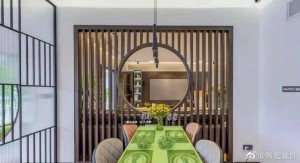Aug . 20, 2024 00:59 Back to list
Shop Building and Design Ideas for Your Next Project
The Art and Science of Shop Construction
In today's rapidly evolving retail landscape, shop construction has transcended mere brick-and-mortar development to become a multifaceted discipline that combines art, science, and strategic planning. The design and construction of a retail space play a vital role in shaping customer experiences, enhancing brand identity, and maximizing operational efficiency.
Understanding the Essentials
At the core of successful shop construction is a deep understanding of the target market, product types, and the brand’s ethos. Before a single brick is laid, thorough market research is essential. This includes analyzing consumer demographics, shopping habits, and competitor landscapes. Such insights guide the design process, influencing layout decisions that optimize customer flow and engagement.
The Design Process
The design phase is both an artistic and technical endeavor. Architects, interior designers, and retail consultants collaborate to create a blueprint that marries aesthetics with functionality. Key considerations during this phase include
1. Space Utilization Efficient space management is crucial. From the entrance to the checkout counter, each square foot must serve a purpose, ensuring that customers can easily navigate the store while promoting product visibility.
2. Brand Identity The design must reflect the brand’s personality. Color schemes, materials, signage, and lighting should align with the overall brand message, creating an immersive environment that resonates with customers. A luxury brand might opt for minimalistic elegance, while a quirky, youth-oriented brand might flourish in bold colors and playful designs.
3. Customer Experience The physical layout must facilitate a positive customer experience. This includes considering the flow of movement—how customers enter, browse, and make their way to the checkout. Features such as strategic product placement, comfortable seating areas, and engaging displays can significantly enhance the shopper's journey.
shop construction

Sustainability in Construction
In recent years, sustainability has become a hallmark of modern shop construction. Retailers are increasingly conscious of their environmental impact, opting for eco-friendly materials and energy-efficient building techniques. This commitment not only appeals to environmentally-conscious consumers but also often results in cost savings through reduced energy bills and waste.
The Construction Phase
Once the design is finalized, the construction phase begins. This stage requires meticulous project management to ensure that timelines, budgets, and quality standards are met. Effective communication between contractors, suppliers, and designers is essential. Regular site inspections help mitigate potential issues and keep the project on track.
Technology Integration
The rise of technology has also revolutionized shop construction. Retail spaces now often include advanced technological elements to enhance customer interaction. This can range from interactive displays and smart mirrors to integrated point-of-sale systems that streamline the purchasing process. As e-commerce continues to grow, savvy retailers are blending online and offline experiences through technology, allowing customers to enjoy seamless shopping journeys.
Conclusion
In conclusion, shop construction is a complex, dynamic field that requires an intricate balance of artistry, strategy, and sustainability. As retailers navigate the challenges of a shifting market, the design and construction of their physical spaces will continue to play a crucial role in their success. By prioritizing customer experience, embracing sustainability, and leveraging technology, retailers can create engaging environments that not only attract customers but also foster long-term loyalty. The future of retail lies in spaces that are thoughtfully designed, expertly constructed, and aligned with the evolving expectations of consumers.
-
The Benefits of Electronic Shelf Labels for Modern Stores
NewsJul.01,2025
-
Space-Saving Retail Store Furniture Designs for Small Shops
NewsJul.01,2025
-
Slatwall vs. Gridwall: Which Store Fixture is Right for Your Business?
NewsJul.01,2025
-
Shop Fittings: Essential Elements for a Functional Retail Space
NewsJul.01,2025
-
How to Design a Minimalist Cosmetic Shop Display
NewsJul.01,2025
-
Creative Clothes Shop Display Ideas to Attract More Customers
NewsJul.01,2025


















































































































